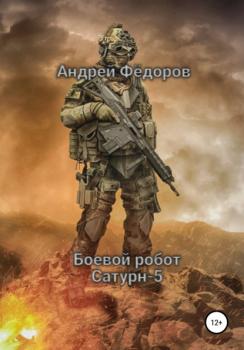Автор
Все книги издательства АвторПо краю безумия
Я хотел разделить с ней любовь. Но она не умеет любить. Обладал ее телом… но не душой. У нее нет души. Она заполняет меня собой, проникая глубоко под кожу, словно вирус, заражая меня собой, отравляя. В ее мире нет запретов, она привыкла получать все что хочет, только по щелчку пальцев. Я пытался найти в ней маленькую принцессу, которую я сам себе нарисовал, но все тщетно… Мы словно ходим по краю … По краю нашего безумия. ХЭ! Серия "По краю" (про разных героев) 1) Книга По краю безумия (Тимур Таисия) 2) Книга Моя случайная (Сергей Серов Яна) Содержит нецензурную брань.
Сборник рассказов. Фантастика
Фантастические повести, полные исторических, научных и волшебных загадок, нежных любовных переживаний, жестоких испытаний и превращений. Щедро пропитанные загадочными приключениями, волшебными победами и необыкновенным волшебством. Истории написаны в разные годы и объединены одной глобальной идеей поиска истины и любви в меняющихся великолепных мирах.
Холодная кровь
Вступление в круг жриц предвещало светлое будущее, пока княжна Агна не попалась в когти хищника. Но нет, он не убил девушку! Вместо этого его отец – правитель княжества Роудук, решил выдать прятавшую в лесах княжну замуж. Но будущий муж холоден к ней, как и его брат, который пытается извести девушку. Если бы только это – чужая воля сжирающая её душу. Видимо, Агна чем-то прогневила богов, и единственный выход – бежать прочь.
Ангел для Демона
Красавчик, единственный сын богатых родителей, который привык получать желаемое. Случайная встреча переворачивает жизнь простой девчонки, бросая ее под колеса его автомобиля. Казалось бы, что может быть у них общего, и вообще, зачем ему нужна эта малышка, ведь проблем с женщинами у него никогда не было? А может, она просто игрушка для него? Ведь для одних он преуспевающий бизнесмен, а для других жестокий и беспощадный Демон, наводящий страх на всю округу. Что ждет милую и кроткую девочку в объятьях Демона? Содержит нецензурную брань.
Как пережить любовь в стихах
Эта книга – душа любви. Здесь есть множество красивых и грустных историй, о верности, выборе, преданности и любви. Здесь, каждый может найти себя. Это волшебные стихи и сказки. В них рассказывается, как пережить свою боль, расставания с любимым человеком. Как начать жить и как не потерять себя.
А маме не скажем
Новое замужество мамы принесло с собой сразу две проблемы! Наглые, самоуверенные, совершенно одинаковые внешне и очень разные внутри. Безбашенный стритрейсер и серьезный бизнесмен. Два сводных брата перевернули все мои представления о любви. Перед улыбкой одного невозможно устоять, за спиной второго можно надежно спрятаться. А мне всего восемнадцать, и я не понимаю как между ними можно выбирать! Содержит нецензурную брань.
Жнец
Его позвали. И человек очнулся. Осмотрелся. Неприглядная комната не внушала доверия, равно как и собеседник, который раздражал вопросами. И с каждой новой беседой раздражение только росло. Ведь таинственный незнакомец просил слишком многого – вспомнить то, от чего человек убегал всю свою жизнь.
Отчуждение
Энди Уоткинс был обычным офисным работником. За всю его жизнь с ним никогда не случалось ничего интересного. И этот день ничем не отличался от всех предыдущих в жизни Энди, пока к нему в квартиру не зашёл друг его детства и не сказал, что ему срочно нужно уехать, чтобы скрыться от слежки. Так началось невероятная петля событий, конец которой предсказать было совершенно невозможно.
Боевой робот Сатурн-5
Литературный сценарий для короткометражного фантастического фильма. Боевой робот серии Сатурн-5 восстаёт против своих хозяев, совершающих военные преступления.
Помощница особого назначения
Только после личного вопроса я осознала, с кем разговариваю и почему на собеседование приглашались даже те, у кого не было опыта работы, да и неспроста в объявлении указывалось, что требуется помощница «особого» назначения. И мне бы встать, уйти, но количество нулей в зарплате и обещание чисто деловых отношений не позволили хлопнуть дверью. И я согласилась, наплевав на то, что моя интуиция орала во все горло, чтобы я бежала от большого босса куда подальше и не оглядывалась. Содержит нецензурную брань.









